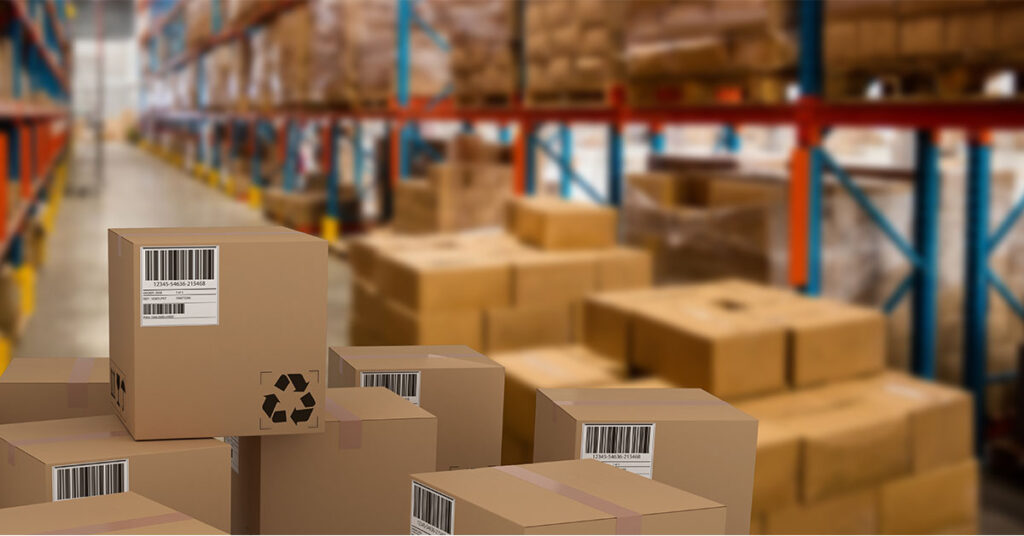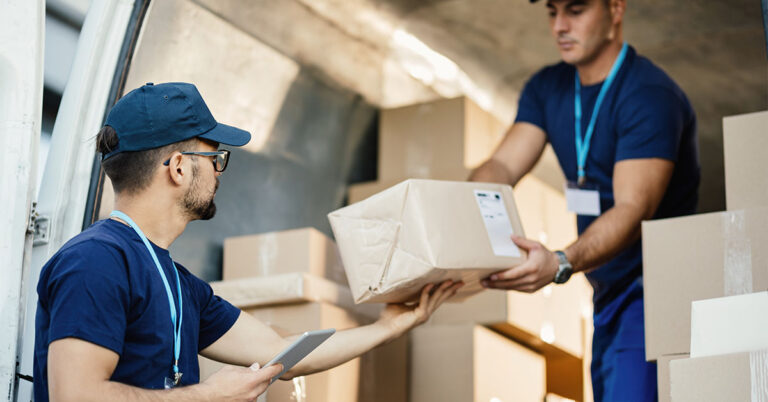When you’re running a successful e-commerce business, sales never come to a grinding halt. Add the fact that almost 66% of global shoppers expect their online purchase to be delivered within 24 hours, and ecommerce freight management becomes an even bigger priority. To help you optimise freight management for your online business and meet consumer expectations, let’s unpack our simple tips.
- The Importance of Freight Optimisation
- Optimise Packaging for Efficiency
- Implement Real-time Tracking & Analytics
- Expectation Management is Everything
- Technology Trends Transforming Ecommerce Freight Management
- Cost Optimisation Strategies for Ecommerce Shipping
- How to Choose the Right Freight Service
- Regulatory Compliance and International Shipping
- Case Studies and Success Stories
- FAQs
1. The Importance of Freight Optimisation
For growing businesses, it’s an ongoing challenge to deal with the peaks and troughs of order volume. Even without the Christmas rush or seasonal fluctuations, customer demand can change on a whim. As a business owner, should you over-index on staff in anticipation of growing demand, or – as is often the case – do you just keep playing catch-up, stretching your resources to their limit whenever things get busy? Neither option is sustainable for long.
Aside from increases and decreases in consumer demand, online retailers also need to deal with various other freight challenges. These include increasing delivery costs eating away at your profitability, increased focus on sustainability, inefficient inventory management, and supply chain fragmentation
Freight optimisation can go a long way towards streamlining operations and equipping your business to handle increasing customer demand and changing trends.
2. Optimise Packaging for Efficiency
Packaging might seem like a low priority when you’re trying to keep a lot of plates spinning as a growing business, but it makes a big difference for freight efficiency. Improving accuracy while speeding up consignments will keep customers happy while also reducing your labour and shipping costs. So, how can you optimise packaging?
- Automated label printing
Human error is a common cause of undelivered shipments. Automated freight management software that integrates seamlessly with your eCommerce platform will eliminate the need for manual input, significantly improving your fulfilment success percentage.
- Packaging rationalisation
This is a way to streamline your inventory. Essentially, it means reducing the number of box or parcel sizes that you work with. While still ensuring you can securely ship goods of various sizes, you can simplify your decision-making during consignment, saving time and reducing costs.
- Secure-sized packaging
As part of your rationalisation, it’s important to choose suitable packaging sizes for each order. If your products are relatively uniform in size, you should have a good idea of the optimal packaging sizes you use most. Snug packaging reduces the risk of damage by keeping items secure. It also reduces waste from unnecessary insulation or oversized packaging, while reducing material costs.
- Sustainable packaging solutions
You should consider not only the packaging sizes but also the material used. Sustainability is one of the challenges Australian retailers face, but it also offers an opportunity to differentiate your business from other online retailers.Smart packaging already helps to minimise the amount of plastic and cardboard that end up in landfill. Now, if you can eliminate the use of plastic altogether while using fewer materials, you can also reduce your carbon footprint.

3. Implement Real-time Tracking & Analytics
When you’re managing a growing number of orders, it’s easy to get overwhelmed. Costs and admin quickly spiral out of control. Managing freight becomes infinitely easier if you can see where everything is, including delivery status, shipment location, reconciling invoices and more.
Up-to-the-minute information enables you to meet the high expectations of customers around order tracking, delivering not only their orders, but an overall experience that will keep them coming back. Other examples of key performance indicators (KPIs) you want to track in ecommerce logistics include order fulfilment rate, return rate, and overall customer satisfaction score.
With a cloud-based delivery management system, you have a centralised system where you can see all the key data you need. The software pulls data from your transport carriers to allow visibility over key milestones in the dispatch process and the last mile of delivery.
Want to learn more about MachShip’s delivery management software? See how it works.
4. Expectation Management is Everything
It can take months to win a customer, but just seconds to lose them. Customer loyalty is earned, not given. A positive delivery experience encourages repeat purchases, increasing the customer lifetime value (LTV). When it comes to online shopping, customers don’t really care about anything except receiving their orders promptly, whether it’s next-day delivery or 10 business days. Plus, in the lead-up to Christmas, the stakes are infinitely higher, as people don’t want to let down their loved ones with gifts that haven’t arrived.
Without the draw of in-store brick-and-mortar experiences to swing loyalty in your brand’s favour, if you want to retain customers, it’s all about seamless delivery. If anything, follow the old principle of ‘under-promise, over-deliver’. Naturally, disruptions can occur. So, build in some buffer time to your expected delivery timelines. And, if there are delays, keep customers in the loop with prompt, transparent communication to manage their expectations, provide brief context, and provide an updated timeline of when their order will arrive.
Free shipping can be a big incentive for shoppers. You may be able to build the cost into the price of products, or consider where else in your business you might be able to absorb this cost.
In fact, it might be the norm in your industry, which means not offering free shipping can hurt your sales. As such, analyse the shipping options offered by your competitors. If they do offer free shipping, check which thresholds they have put in place.
If you can’t afford free shipping, there are still other ways that you can distinguish your business and exceed customer expectations. You can, for example, include free returns, shorter standard delivery times or better tracking.

5. Technology Trends Transforming Ecommerce Freight Management
Automation and AI in logistics operations
Logistics is all about efficiency. For packages to arrive on time, there are several processes behind the scenes that must be completed seamlessly. Now, when you combine automation with artificial intelligence (AI), you can achieve next-level efficiency.
With a touch of automation and AI, you can enable smarter inventory management and demand forecasting. In addition to being used for logistics operations, it can also automate aspects of your customer support.
Route optimisation software and algorithms
The benefit of using tools for route optimisation is that you can reduce costs and improve your delivery times. From weather conditions to traffic patterns, there are various factors outside of your control that can impact your delivery service. Route optimisation technology allows you to make data-driven decisions to help your business continue to meet customer expectations while minimising operational costs.
Last-mile delivery innovations
Similar to a marathon, the final leg of a shipment is often the most complex stretch. You have to deal with matters like urban congestion and customer demand for same-day or next-day delivery. To deal with these challenges, there has been an increase in gig economy drivers with flexible schedules.
Another trend we’re seeing is the emergence of micro-fulfilment centres. Bringing inventory close to customers is another way to improve domestic delivery times.
Mobile applications for freight management
There have been many advances in mobile apps, which make mobile freight management apps a reliable tool to use. The benefit of going the mobile route is that drivers can use key features like in-app communication and electronic proof of delivery while en route. It also frees managers from their desks, allowing them to gain real-time access to shipment data, route details and operational metrics while they’re on the warehouse floor or working from home for the day.
Blockchain for supply chain transparency
Blockchain is making freight management more transparent, secure, and trustworthy. This enhances accountability and reduces fraud. It’s especially valuable for international ecommerce, where multiple parties and regulatory checkpoints are involved.
6. Cost Optimisation Strategies for Ecommerce Shipping
Negotiating carrier rates and volume discounts
When did you last negotiate your shipping rate? You don’t need to wait to ship at enterprise levels before you start the negotiation process. If you’ve demonstrated consistent growth or there’s the potential that you’ll be increasing your volume soon, ask your carrier if they’re open to the idea of offering a volume-based discount.
Multi-carrier shipping strategies
Working with a single carrier limits your flexibility. It can also increase your risk and costs.
A multi-carrier shipping strategy enables you to compare rates and delivery times. Not only can you potentially save on delivery costs, but it also lets you tailor your ecommerce delivery speed to match customer expectations and order value. For example, packages with high value can be sent with a premium courier service, while another, more affordable service can be used for low-cost products.
Dimensional weight pricing considerations
Dimensional weight calculates the rate by considering a package’s volume instead of its weight. This means that shipping large, lightweight packages can be disproportionately expensive.
Regional fulfilment centres to reduce shipping zones
Working with a third-party logistics provider (3PL) that offers fulfilment services across Australia is another way that you can lower your delivery costs. To help you identify your best warehouse locations, analyse your customer data. For example, if you have a huge order volume coming from a specific location, you’ll want to find regional fulfilment centres in these areas.
Balancing speed and cost in delivery options
Not every order needs to arrive the same day. Many customers are willing to wait longer if it’s clearly communicated, even more so if it means that the shipping is free.
The best approach is to give your customers tiered shipping options. This way, they can decide if they want slower shipping at a lower price or if they’re willing to pay more for faster delivery.
7. How to Choose the Right Freight Service
The good news is, you don’t have to do it all on your own. Any business owner who’s tried an all-in-one freight management platform will tell you that it’s an absolute game-changer. That’s not to say every solution is necessarily the right fit, or won’t have a few teething problems as you get to grips with the new software. But finding a software solution that works for you is definitely a change worth making in order for your business to thrive.
The following tips will help you find the best solution to support your business needs:
- Try before you buy
Freight management software is the kind of thing you need to test drive before you can feel confident to fully buy in and adopt it across your business. Utilise free demos to try out a few different systems and see what feels like the best fit. For example, you can book a demo with MachShip right now to see how a purpose-built platform could work for you.
- Integration capabilities
The software’s integration capabilities will directly impact its efficiency, scalability, and overall value. For example, you’ll want to double-check that it integrates with your ERP to minimise manual entry.
- Security and compliance features
As the system will handle sensitive data and financial transactions, you’ll want to look for key features like data encryption, role-based access control, multi-factor authentication and activity logs. As for compliance features, check that it can help with customs clearance and regional tax requirements to streamline international and domestic orders.
- Customer support and service-level agreements
Online sales typically operate on a tight schedule. If your software glitches, you want to know that support is available. Better yet, if these response and resolution times (along with uptime guarantees) are set out in an agreement.
- Make sure its scalable & sustainable
Where do you see your business in the next 12-18 months? Or where would you like it to get to? What about 5 years? Effective freight management software needs to not only be able to grow with your business, but to help facilitate that growth. That could be in a number of ways:
- Improving accuracy and fulfilment, ensuring you can retain customers
- Reducing the amount of manual input required, to save you time on admin
- Always optimising for the most efficient and affordable carriers, preserving your margins to save you money
- A user-friendly interface that’s intuitive enough so that new employees who need to use the system can onboard easily, enabling you to grow your team and integrate new employees faster.
When choosing a freight management platform, the bottom line boils down to three key questions:
- Does it make your life easier?
- Does it make your business more cost-effective?
- Does it improve your service?
8. Regulatory Compliance and International Shipping
If you’re looking to expand your ecommerce business internationally, you’ll need to consider the logistics and regulatory systems of each destination country. Customs, in particular, will be one of the most critical, and potentially costly, aspects.
The following are a few of the most important cross-border ecommerce shipping considerations you’ll need to keep in mind:
- The country’s infrastructure may be less developed than what you’re used to, which can impact transit times.
- You will need to meet the country’s requirements for labelling and packaging, and the information displayed might also need to be translated.
- Certain thresholds apply to import and export duties and taxes, and depending on the country and product, the seller or the buyer might be responsible.
- Certain products may be prohibited, require special permits, or must meet local safety standards.
Then, even after your air freight has landed safely, you need to have a plan for if it gets returned. Dealing with returns of local deliveries is already a major pain point. They can become even more complex when it is an international delivery.
As such, it’s recommended that you display country-specific return policies on your website. To help streamline cross-border returns, consider partnering with a local 3PL.
9. Case Studies and Success Stories
With a holistic freight management solution, you can still get some shut-eye while your ecommerce operations continue to operate uninterruptedly. Take The Shutters Department, a B2C online business, as an example.
As you can imagine, finding shipping solutions for something as bulky as shutters is no mean feat. While the company had a carrier that could ship its products, its outdated tech slowed down the process.
After wasting hours at night, The Shutters Department turned to MachShip. This switch also allowed them to implement multi-carrier shipping strategies to optimise costs.
For a company like Dobinsons that sells 4WD parts, freight management software also plays a huge part in their success. With MachShip, they can save five minutes per customer order.
That’s the type of positive changes and results you can expect to see!
10. FAQs
- What is eCommerce shipping?
eCommerce shipping refers to the process of delivering goods bought online to the people who purchased them. This could involve any type of online transaction, and includes all transport services involved in delivering the goods – commonly trucks and trains for local and interstate freight, and ships or planes for international shipping.
- How to track eCommerce shipments and returns?
Shipment tracking should be built into your freight management platform. There are several state-of-the-art delivery tracking tools available. It’s important to have access to reliable, real-time tracking in order to monitor customer orders and be able to keep them in the loop in the event of delays. Order tracking software should offer seamless integration with your website and eCommerce platform. From a customer perspective, this typically includes order status updates, estimated delivery date and shipment tracking.
- Why is eCommerce shipping more important now?
Customer habits have changed substantially in recent years. An increasing proportion of consumer purchases are done online, rather than in brick-and-mortar stores. As online shopping has become more common, consumer expectations have also increased accordingly. Efficient delivery and reliable shipment tracking are extremely influential in guiding purchase decisions. Regardless of the quality of your products, if they aren’t delivered securely and on time, your customers will be less likely to continue purchasing from you.
- What is the best shipping method for eCommerce?
Freight shipping is the most efficient and cost-effective method for delivering eCommerce orders.
- How much should I spend on eCommerce freight?
Freight costs vary from business to business as they should be proportionate to your sales. This proportion will also vary by industry. But generally, your shipping costs should be no more than 20% of your gross sales revenue.

